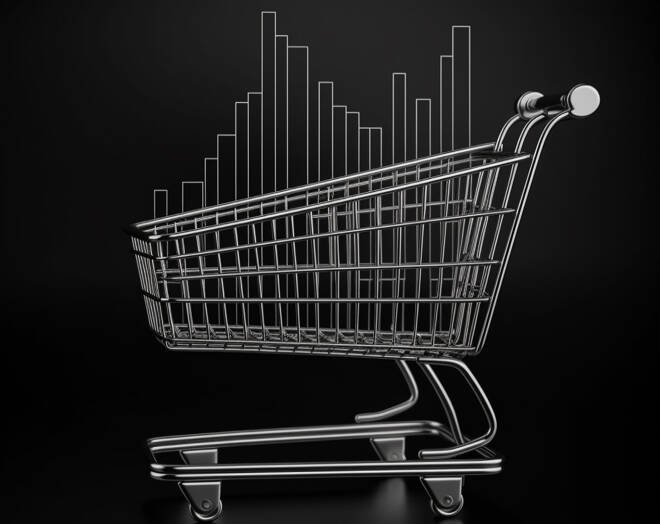Advertisement
Advertisement
German Manufacturing PMI and Retail Sales Send Mixed Signals
By:
German Manufacturing PMI numbers for May sent a gloomy signal, with new orders tumbling to fuel economic uncertainty,
It is a busy day on the European economic calendar. German retail sales and euro area manufacturing PMI numbers drew interest this morning.
Following disappointing Q1 GDP numbers from Germany, a pickup in consumer spending and improving manufacturing sector activity would provide comfort.
German retail sales rose by 0.8% in April versus a forecasted 1.0% increase. In March, retail sales slid by 2.4%. However, the German Manufacturing PMI numbers disappointed, reflecting the uncertainty regarding the economic outlook.
Germany’s manufacturing PMI fell from 44.5 to 43.2 in May versus a prelim 42.9. According to the finalized PMI survey,
- New orders fall at the most marked rate since November 2022.
- Firms cited weakening appetite for investment amidst tightening financial conditions and de-stocking efforts, client budgetary pressures, and an uncertain economic outlook as reasons for the weaker demand.
- New export orders fell at the steepest rate since October 2022.
- Production contracted after expanding in April.
- Purchasing costs fell for the fourth consecutive month and at the most marked pace since February 2016.
- Factory gate charges rose modestly in May as a result of increased competition, with the rate of output price inflation the least marked in the current sequence of inflation dating back to October 2020.
Manufacturing PMIs from Italy and France were also disappointing, leading to a fall in the Eurozone PMI from 45.8 to 44.8 versus a prelim 44.6.
Pre-European Session News
Before the European session, economic data from China set the tone. China’s all-important Caixin Manufacturing PMI for May gave investors a better view of the macroeconomic environment midway through the second quarter. The Caixin Manufacturing PMI increased from 49.5 to 50.9 in May versus a forecasted 50.3.
News of the US House of Representatives vote on the US debt ceiling deal also needs consideration. US lawmakers voted in favor of the debt ceiling deal.
EUR/USD Reaction to German Manufacturing PMI and Retail Sales Numbers
Before the economic indicators, the EUR/USD rose to an early high of $1.06974 before falling to a pre-stat low of $1.06802.
However, in response to the numbers, the EUR/USD rose to a post-stat high of $1.06867 before falling to a low of $1.06618.
This morning, the EUR/USD was down 0.17% to $1.06712.
Next Up
Prelim Eurozone inflation numbers for May will be out shortly. Economists forecast the annual inflation rate to hold steady at 7.0% and core inflation to soften from 5.6% to 5.5%. Hotter-than-expected inflation figures would force the ECB to continue raising interest rates to tame inflation.
The ECB will also be in the spotlight, with the ECB Monetary Policy Meeting Accounts and ECB member commentary in focus. ECB President Christine Lagarde and Executive Board member Andrea Enria are on the calendar to speak today.
Looking ahead to the US session, it is a busy day on the US economic calendar.
ADP nonfarm employment change, initial jobless claims, and the ISM Manufacturing PMI will move the dial. Solid labor market numbers could refuel bets on a 25-basis point June interest rate hike.
According to the CME FedWatch Tool, the chances of a 25-basis point interest rate hike tumbled from 66.6 to 26.4% on Wednesday as the markets responded to Fed chatter that favored a June pause.
However, FOMC members and US debt ceiling-related news will also need consideration later today.
About the Author
Bob Masonauthor
With over 28 years of experience in the financial industry, Bob has worked with various global rating agencies and multinational banks. Currently he is covering currencies, commodities, alternative asset classes and global equities, focusing mostly on European and Asian markets.
Advertisement
